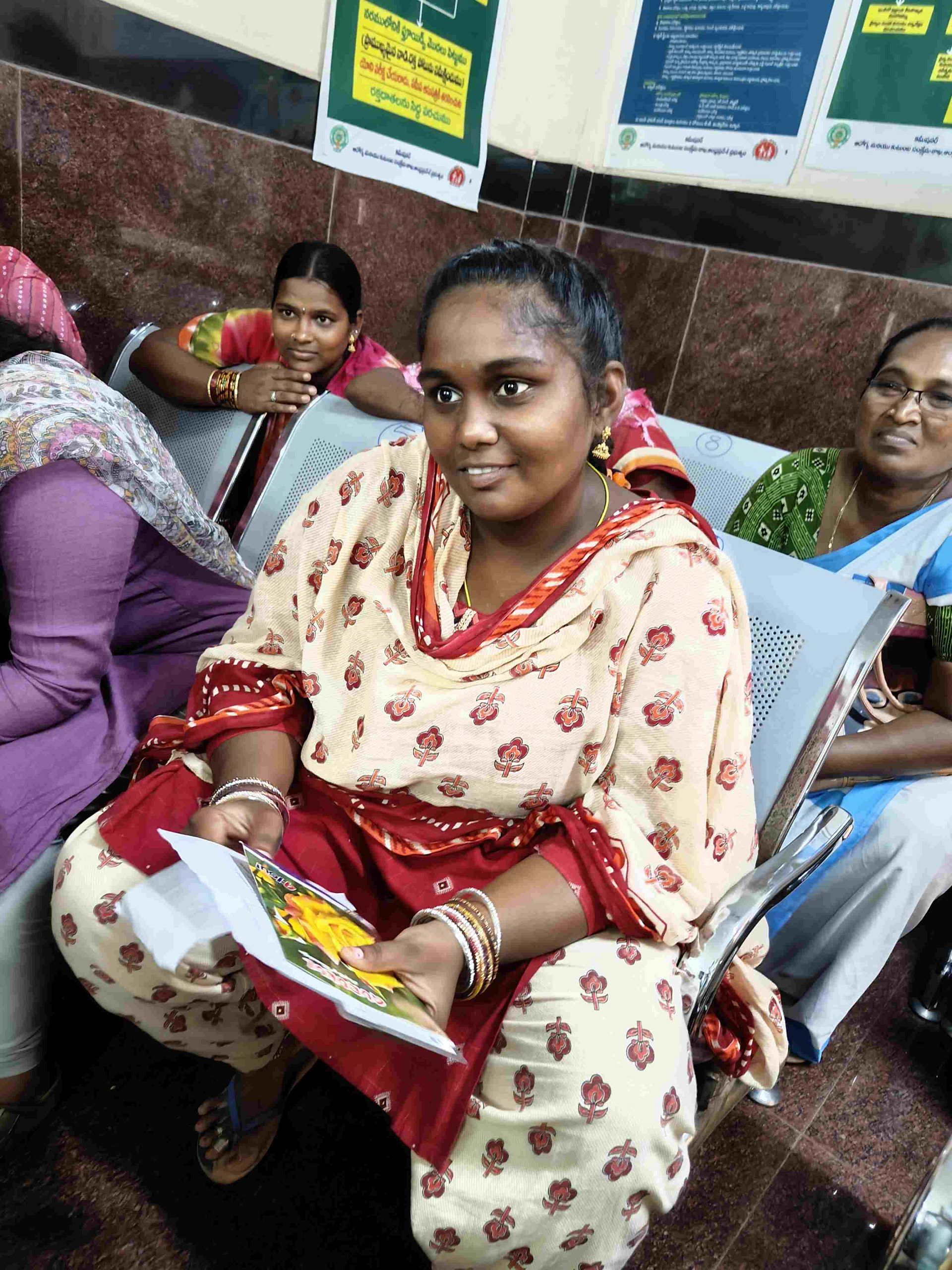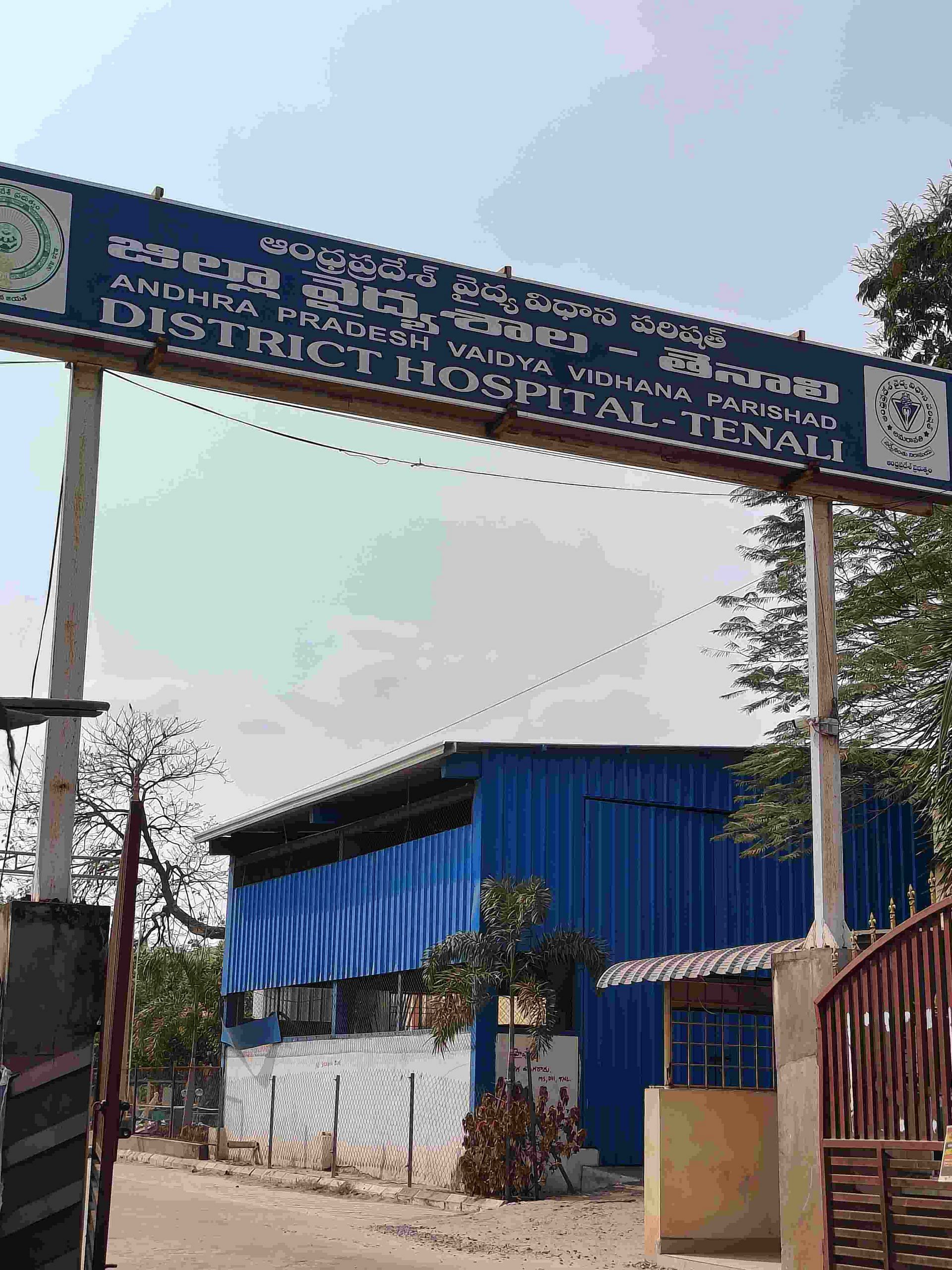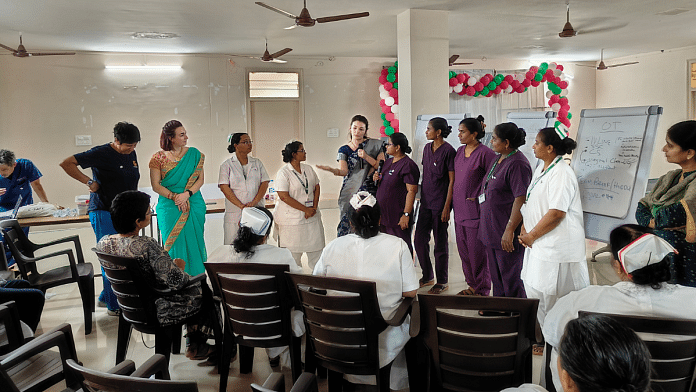Tenali (Guntur, Andhra Pradesh): Supriya Attota, an 18-year-old homemaker from Tenali in Andhra Pradesh’s Guntur, is three months pregnant and has just started visiting the district hospital to ensure everything is going smoothly for her baby’s arrival.
But the thought of labour pain makes her nervous. “I want to avoid this pain. I have asked around and many women told me that it’s possible to do so if I deliver the baby through Cesarean Section (C-Section),” she tells ThePrint.
However, at the hospital, Suneetha. A, a trained midwife, gently rebuffs her during a childbirth education class for pregnant women. The surgery, Suneetha insists, will only happen when it’s medically indicated.

She also lists the medical complications following a C-section — higher blood loss, longer recovery period, abnormality in the placenta in future pregnancies, chronic pelvic and back pain, trouble breastfeeding, and possible respiratory issues for the baby.
Supriya isn’t the only one to make such a request, says Dr. T. Sowbhagyavani, the medical superintendent at the district hospital in Tenali, C-section has become something of an elective surgery.
“Until last year, the C-section rate at our hospital was more than 60 percent — it is fuelled mainly by the demands by the would-be mothers and doctors also tend to give in,” adds Dr Sowbhagyavani.
Nor is the Tenali hospital an exception in this regard. The National Family Health Survey- 5 conducted between 2019 and 2021 shows that at 42.5 percent, Andhra Pradesh has one of the highest rates of C-sections in the country, after Telangana (60.7 percent) and Tamil Nadu (44.9 percent). The national average for C-sections is 21.5 percent.
It’s this growing trend of “unnecessary” C-sections that the Andhra Pradesh government’s project ‘C-Safe’ aims to reverse. Launched last week in collaboration with the Hyderabad-based Fernandez Hospital Educational Research Foundation (FHERF), a not-for-profit that works to deliver women and childcare facilities, and the University of Birmingham, UK, and supported by the WHO and UNICEF, C-Safe is a 5-year training programme that aims at ensuring these surgeries are done only for the “right reasons” and according to the Union Ministry of Health and Family Welfare’s guidelines.
The project is especially important given the maternal mortality estimates in India. According to a UN report in 2023, India topped a list of 10 countries that together account for 60 percent of global maternal deaths.
According to a 2019 study in The Lancet, maternal deaths followed by C-sections are 100 times higher in low and middle-income countries, such as India, as compared to high-income countries.
The district hospital in Tenali has been chosen as a pilot site for the C-Safe project. From there, it will be implemented at the district hospital in Anakapalli near Visakhapatnam, and the government general hospitals in the cities of Rajamahendravaram, Machilipatnam, and Eluru over the next few months, officials connected to the programme tell ThePrint.
“It’s somewhat disturbing to see that our birthing facilities have become like a conveyor belt, where needless surgeries after surgeries are performed to deliver babies when birthing should be treated as a normal physiological process instead of a highly medicalised one,” Inderjeet Kaur, director of midwifery services at Fernandez Foundation and principal investigator for the project, tells ThePrint.
Inderjeet, a midwife herself, also points out that midwives are at the forefront of the initiative. “We understand that C-section can be a life-saving intervention in some cases but the idea is to identify and carry out only those surgeries that are absolutely unavoidable,” she says.
Dr. Anil Kumar, additional director of the maternal and child health division at Andhra Pradesh’s Commissionerate of Health and Family Welfare, says a select set of practices — called a patient-safety bundle — is being developed as part of the project.
The commissionerate is overseeing the C-Safe programme.
According to Dr. Kumar, this safety bundle will be field-tested and evaluated to develop a relevant set of core C-Section practices, which will ultimately help experts determine when such surgeries are necessary, he says.
“As a part of this initiative assisted vaginal deliveries (AVD) training package will also be developed to support decision-making for AVD and to promote its safe use. In addition, the protocols for clinical decision-making on indications for C-sections will also be developed and implemented to rationalise the procedure,” Dr. Kumar says.
Also Read: India’s Maternal Mortality Ratio has fallen much faster than the world’s since 1990. Here’s how
What is C-section
The World Health Organization (WHO) defines a C-section as a surgical procedure that can save the life of a woman and her baby when undertaken for medical reasons and should only be used in complicated pregnancies.
Scientifically, the surgery is indicated in conditions such as cephalopelvic disproportion (CPD), — a condition when the baby’s head or body is too large to pass safely through the pelvis — previous C-sections, multiple pregnancies and placenta previa, a condition when the placenta is attached too low in the uterus and the baby is in a horizontal, or sideways position or breech presentation.
Cases where a woman has heart conditions or uterine obstruction, too, may necessitate a C-section.
However, according to experts, these surgeries have gradually become alarmingly common in countries such as India, even though the WHO says that population-level C-section rates higher than 10 percent are not associated with reductions in maternal and newborn mortality rates.
Population level refers to a level of study that examines the effects of a phenomenon on the entire population rather than just individuals.
The WHO says that there’s no evidence showing the benefits of cesarean delivery for women or infants who do not require the procedure, and as with any surgery, these are associated with short and long-term risks that can extend many years beyond the current delivery and affect the health of the woman, her child, and future pregnancies.
Midwives in charge
It was in 2016 that Telangana state first recognised the need to have specialised midwives, after a national consultation organised by the Union health ministry, UNICEF, the state government, and Fernandez Foundation on the causes and determinants of C-sections.
This consultation was held against the backdrop of rising C-section rates across India, with Telangana showing the highest in the country. Midwifery was seen as a possible solution to this growing public health problem.
The following year, the first cohort of 30 professional midwives was trained according to the International Council of Midwives (ICM) standards over an 18-month course — the first public-private partnership of its kind.
A professional midwife, trained to global standards, provides continuity of care throughout pregnancy and childbirth and has helped significantly reduce the number of planned cesareans and the overall C-section rate, research projects from various countries show.
In Telangana, 353 Nurse Practitioners in Midwifery (NPMs) were placed in 66 facilities in 32 districts. The programme was later replicated in neighbouring Andhra Pradesh, where 60 NPMs were trained and later placed in 13 facilities across the state.
“Later, when we conceptualised the C-Safe project, the Andhra Pradesh government showed keen interest in implementing it across all public hospitals,” says Dr. Radha Reddy, a public health specialist at Fernandez Foundation and co-investigator for C-Safe India.
However, the project is still at the pilot stage and will be scaled up if there’s positive evidence of a reduction in C-section rates and lowering of complications following surgeries deemed unavoidable, she says.
“In fact, we will urge the Centre also to adopt the model for other states once sufficient evidence is generated,” Dr. Reddy says.
At the district hospital in Tenali, Suneetha A, originally a general nurse-cum-midwife retrained as NPM stresses that her approach now is to promote physiological births and reduce over-medicalisation of the process.
Midwives such as Suneetha are part of the Midwifery Led Care Units and Training Unit — Y.S. Jagan Mohan government’s initiative to encourage women to have normal deliveries. Under this programme, midwives handle normal deliveries, leaving specialist doctors free to take care of complicated ones.
The state government has promised Rs 6 lakh to each of the state’s 13 healthcare facilities-turned-MLCUs.
As part of their duties, these midwives are tasked with recording the history of pregnant women, conducting physical assessment and childbirth education classes on nutritional advice, and demonstrating prescribed antenatal exercises.
They also need to help with other pre-birth planning activities, such as giving perineal massages from 35 weeks of pregnancy. Once a woman is in labour, these midwives are tasked with providing “respectful” care in their convenient birthing positions and pharmacological pain relief measures.
They are also trained to act in case of fetal distress by carrying out episiotomy (that is, an incision through the area between the vaginal opening and anus), identifying perineal tears, and even suturing minor tears.
Additionally, they can also identify complications during labor, childbirth, and the immediate postpartum period, and give reports to specialist doctors.
Among their duties are providing immediate and essential care to newborns, performing neonatal resuscitation when indicated, providing care for women and children after childbirth, encouraging breastfeeding, and guiding women on the best infant bonding and child-rearing practices.
Suneetha rejoined the Tenali district hospital after her training in October last year.
“We have been taught to provide compassionate care for childbearing women, newborns, and families, across the continuum, throughout pre-pregnancy, pregnancy, birth, postpartum, and the early weeks of life,” Suneetha says.

‘Safe surgery when necessary’
According to officials involved in the C-Safe, the programme also has two other crucial components — C-Op, aimed at implementing safe cesarean practices, and C-Non, aimed at targeting safe and respectful care during labour resulting in vaginal births.
“We carry out many C-sections in our facility but sometimes don’t follow some interventions — or even follow them in the right order. (Interventions) such as delayed cord-clamping, infection control, and vaginal cleansing, and the appropriate use of antibiotics that can make a huge impact on mother, baby, and the environment at large,” says Dr. Shwetha M., an obstetrician at the district hospital in Tenali.
She hopes that the C-Safe initiative will prepare her to adopt the best practices and help reduce maternal morbidity and mortality.
Dr. Anil Kumar, additional director of the maternal and child health division at Andhra Pradesh’s Commissionerate of Health and Family Welfare, says that the initiative will focus on helping specialists perform safer surgeries.
Based on the pilot project’s success, the state government has plans to scale it across districts to promote assisted vaginal deliveries in all indicated cases, he says.
Meanwhile, at the Tenali hospital, which sees about 250-300 births every month, the immediate target is to bring down C-sections to about 40 percent and then lower it further.
“Our higher-ups will carry out weekly audits of all child-births and assess how the project is being carried out,” medical superintendent Dr. Sowbhagyavani, quoted earlier, says.
This report has been corrected to reflect the fact that Andhra Pradesh has the third highest, not second highest, rate of C-sections in India.
(Edited by Uttara Ramaswamy)
Also Read: India-specific growth standards for kids to gauge nutrition may be far off, govt wants a study first



